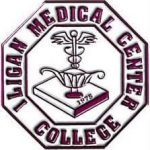Brine Shrimp Lethality Assay on Citrus microcarpa Bunge (kalamansi)
Lalaine Grace Maghanoy, Cherry Mae Yuto *, Mylene Uy, Olga Nuñeza
* Correspondence: cherrymaeyuto@gmail.com
Abstract:
The extract of Citrus microcarpa Bunge leaves was evaluated for brine shrimp lethality in different concentrations (1000 µg/mL, 500 µg/mL, 100 µg/mL, and 10 µg/mL). All experiments were done in triplicate, and the mean result was noted. The lethal concentration LC50 of the test samples after 6 hours and 24 hours was obtained. Using probit analysis, the lethality concentration (LC50) was assessed at 95% confidence intervals. LC50 of less than 100 µg/mL was considered as potent (active). Absolute ethanol Extract has the highest value of being potent or having the highest value for having bioactive components compared to the other two extracts. It has the highest percent mortality relative to the other two extracts, and it also has the highest acute toxicity value for 6 hours of exposure to Artemia salina with a value of 434.01 µg/mL, while the chronic toxicity is 29.01 µg/mL. The result indicates that the prepared extract was rich in bioactive compounds. Thus, Brine Shrimp Lethality Test is a convenient monitor for screening and fractionation in the discovery and monitoring of bioactive natural products.
Keywords: chest; clinical; Philippines; radiographer; reporting; rural health
![]()








